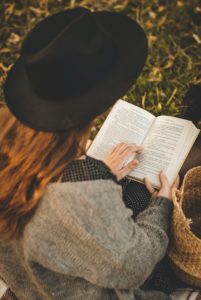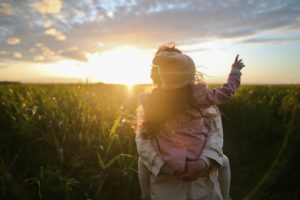In a world where vulnerability often feels like a risk, Paulina Leang has embraced it as a pathway to healing and connection. Through her Open Self-Love Substack, she invites others to explore their emotional landscapes, offering both a safe space for expression and a beacon of hope for those navigating their own journeys. Inspired by her own experiences of struggle and resilience, Paulina’s writing is a testament to the transformative power of self-love and community support. In this interview, she shares her motivations for creating Open Self-Love, the role of writing in her healing process, and the invaluable lessons she’s learned along the way. Join us as we dive into an inspiring conversation about the importance of embracing our inner selves and the healing that comes from sharing our stories.
1. What inspired you to start the Open Self-Love Substack, and how does it align with your personal journey?
In my interpersonal relationships, I have found that people gravitate to me and feel comfortable sharing their struggles or emotional experiences, even strangers and acquaintances. It’s an honor to hold that space for others, but it also takes its toll. Open self-love is my way of providing empathy and emotional support while protecting my personal energy. I have a wound of self-expression. Writing about and sharing my personal journey is my way of overcoming the fear of being perceived. I think creative work is the most vulnerable work, it is deeply intimate and provides insight into our inner worlds. I’d like to think that sharing my work on Substack heals this wound.
2. How do you use writing as a tool for healing, both for yourself and your readers?
In my early life, writing was the only outlet of emotional expression I had access to. It was my lifeline. It was relief from the pressure of complicated and intense emotions in an environment where my feelings and experiences were consistently denied and dismissed. When I fell away from the practice of writing, my emotions would eat me away—there was a noticeable impact on my health. In writing for Substack, I like to provide silver linings. Things like, acknowledging the gained resilience from enduring traumatic experiences. Sometimes it is overwhelming to think about the way our painful experiences rob us of joy, it is easy to spiral. I want to show my readers that there is hope, and that there is a way through it. That the ways we adapted and learned how to protect ourselves because of trauma isn’t just insult to injury. That we are deserving of joy and healing, that we can choose it.
3. Can you share a specific moment or experience that influenced the creation of Open Self-Love?
It’s hard to pinpoint. I purchased the domain years ago but I lacked the discipline and belief in myself to get started. I finally got out of my own way this year and decided that regardless of outcome, I would start this journey of sharing my writing for myself, that I gave myself a chance and actually tried to put my work out there was good enough of a goal.
4. How has your own personal experience with mental health shaped the content and approach of your Substack?
From an anthropological perspective, mental health outcomes are shaped by not only our early childhood experiences and genetic disposition but also the context that surrounds us. This includes the climate, the community, family history, global events, and the greater socioeconomic sphere. Given this, I believe that we cannot heal our mental health challenges within a vacuum, we heal within the community because we are hurt within a context that is outside ourselves. It is a great burden to carry the belief that mental health is an individual responsibility. It’s the responsibility of an individual to get the ball rolling but we don’t have to do it alone. A sick society creates sick people. The plant analogy is a great example of this. A plant needs proper light, nutrient-rich soil, and space for its roots to thrive. When its basic needs are met, in an environment conducive to growth, the plant can flourish. My hope is that by sharing my healing journey, I can provide inspiration for others who are navigating similar challenges and create a community of support.
5. What strategies or practices do you incorporate into your writing to foster a sense of self-love and healing?
I acknowledge the heavier, darker emotions and balance that by incorporating practical affirmations and positive mental reframes.
6. Can you discuss a particular piece or theme from Open Self-Love that you found especially meaningful or impactful?
Self-sovereignty. Regardless of the past, we can become accountable in the present for what we think we deserve and move in that direction. Even if at first the belief feels unbelievable, even if the needle moves only slightly, it is still a positive change. Thankfully the human brain is malleable.
7. What role does community support play in your work, and how do you engage with your readers?
How do you handle moments of self-doubt or difficulty in your creative process?
I view open self-love as an act of devotion for the greater collective. My writing, like for many others, reveals my most intimate thoughts. In a way, I am sacrificing my privacy at the altar of Substack because I believe that sharing my work benefits my well-being. I feel that my creative expression is healing for my inner-child.
8. Can you describe a significant lesson you’ve learned through your work with Open Self-Love?
I’ve learned that it’s not enough to simply write. That i also need to talk about my writing and share my writing—repeatedly. And through my willingness to be seen, and be vulnerable, I am healing the part of me that fears being seen.
9. What message or piece of advice would you like to share with other women navigating their own paths to self-love and healing?
To have patience and compassion for yourself along the journey, and to create space for fun and joy. Sometimes it can feel frustrating that we haven’t “fully healed” yet even if we do all the work, or maybe it seems like we’re going backwards. I think part of the healing is to not be so obsessed with it, and to allow for self-acceptance while also knowing that there is still work to do.
IG and TikTok: @paulinadavie






